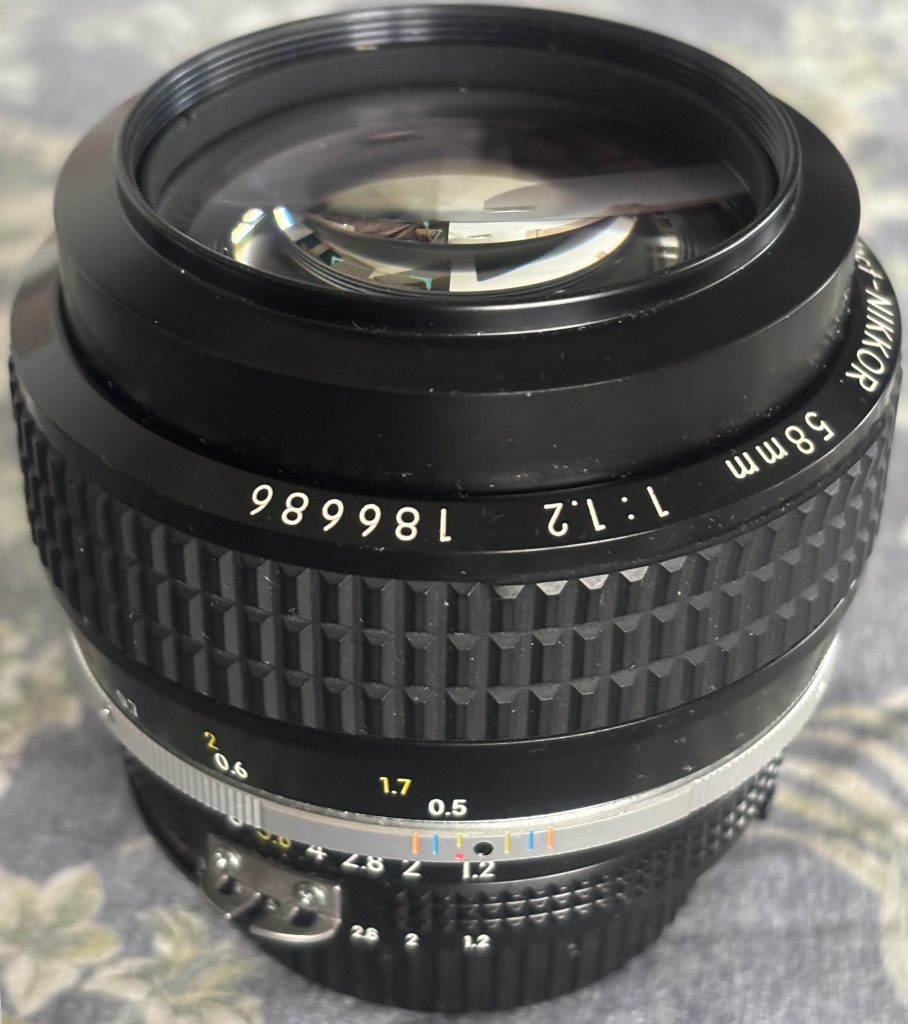
The Noct 58mm f/1.2 is a purpose-built, character lens: extraordinary center rendering and one of the best historical solutions to sagittal-coma flare, paired with very smooth, flattering bokeh — but it demands respect. On modern digital sensors it rewards careful technique (precise MF, stopping down when you need uniform sharpness) and modern tools (live-view magnification, focus peaking) make it far more usable. If you want a unique “wide-open” look for portraits and low-light moods, the Noct is still hard to beat; if you need corner-to-corner clinical sharpness at f/1.2 for landscapes or architecture, this isn’t the lens for that job.
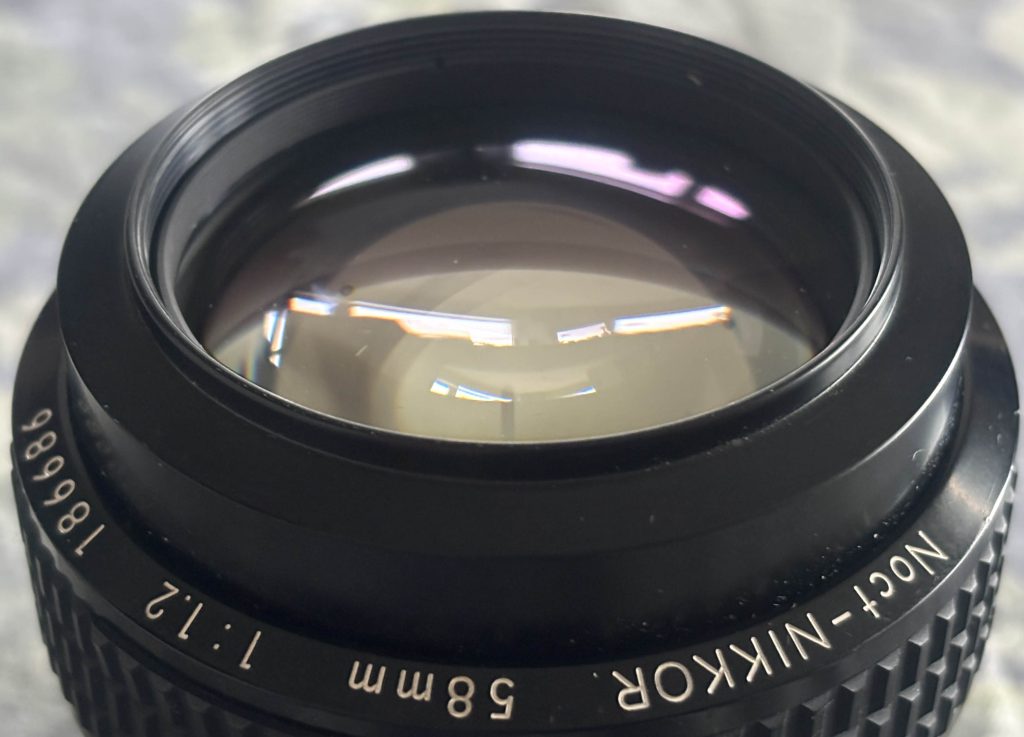
What Nikon designed this lens to solve
The Noct was created to solve a specific optical problem: sagittal coma flare in wide-aperture “normal” lenses (how point lights smear and turn into comets off-axis). Nikon’s design priorities were to perform exceptionally at maximum aperture for night and low-light shooting — not to chase modern corner-to-corner micro-resolution at every aperture. That heritage explains the lens’s soul: beautiful wide-open rendering and point-light control rather than “evenness” across the frame at f/1.2.
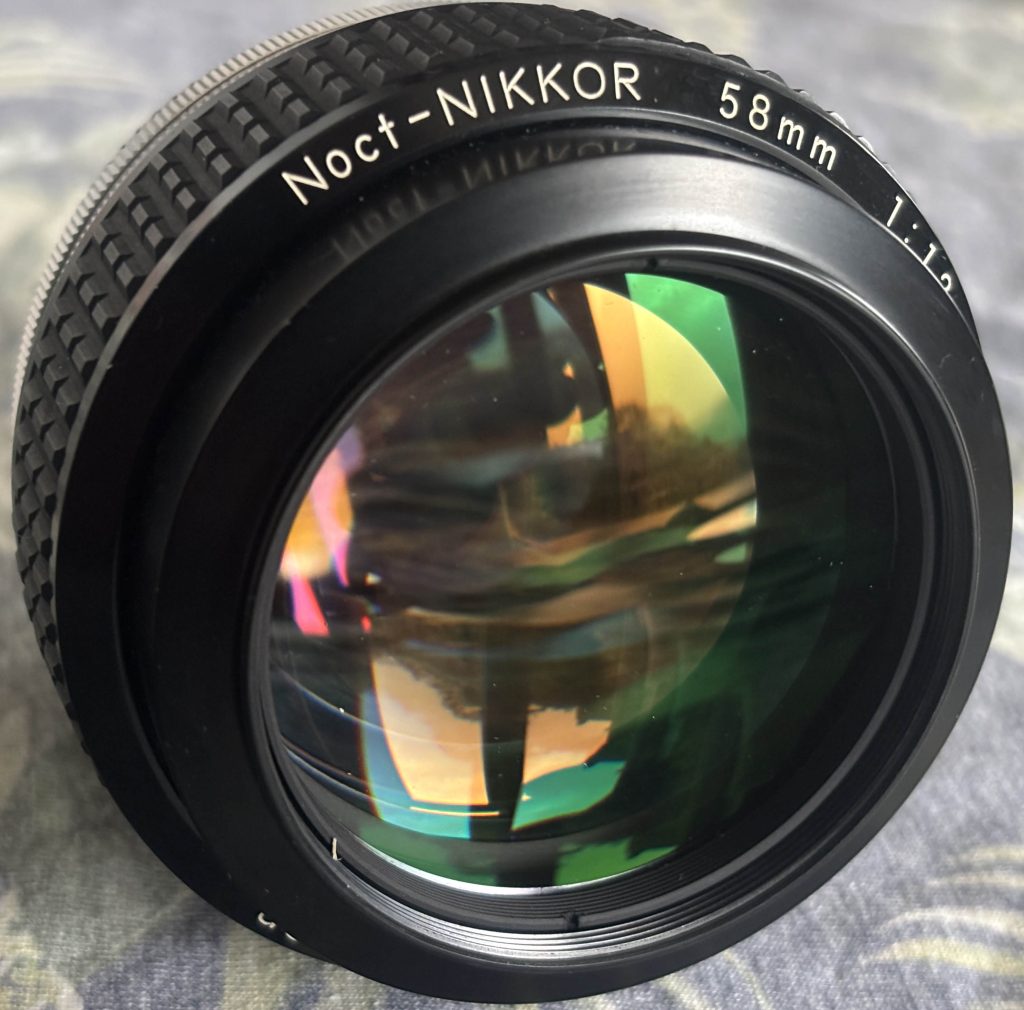
Build, ergonomics, and focusing
Build: Classic all-metal Nikon Ai/AI-S construction — solid, compact, with engraved markings and a tactile aperture ring. Feels like a precision tool.
Focus: Manual focus only. At f/1.2 the depth of field is wafer-thin; tiny focus errors are punished. On mirrorless bodies use focus-peaking and magnified live view — these modern tools make the Noct usable for critical wide-open work. If you plan to zone-focus or shoot moving subjects, the lens is a poor fit unless you’re very practiced.
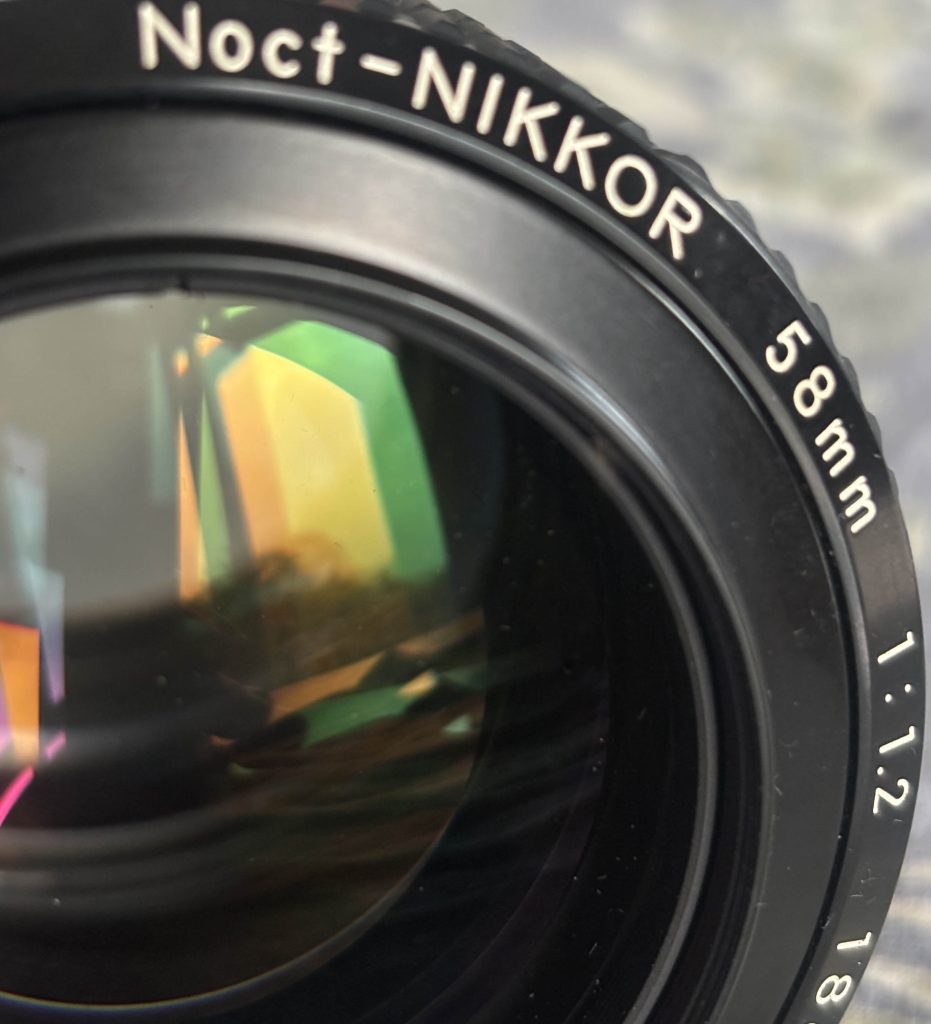
Optical performance
- Center: Very strong. The Noct’s centre performance wide open is unusually good for a vintage f/1.2; it produces high perceived sharpness and contrast when perfectly focused. This is consistent across modern tests.
- Midframe & corners: The outer field lags at f/1.2. Expect softness and lower micro-contrast towards the edges at infinity focus; stopping down improves it dramatically, with most reviewers finding the lens “most comfortable” between f/2 and f/5.6 for balanced frame performance. If you need edge-to-edge sharpness on a high-resolution mirrorless sensor, anticipate stopping down.
Practical takeaway: center shots wide open = magical; wide scenes at f/1.2 = mixed results unless you stop down.
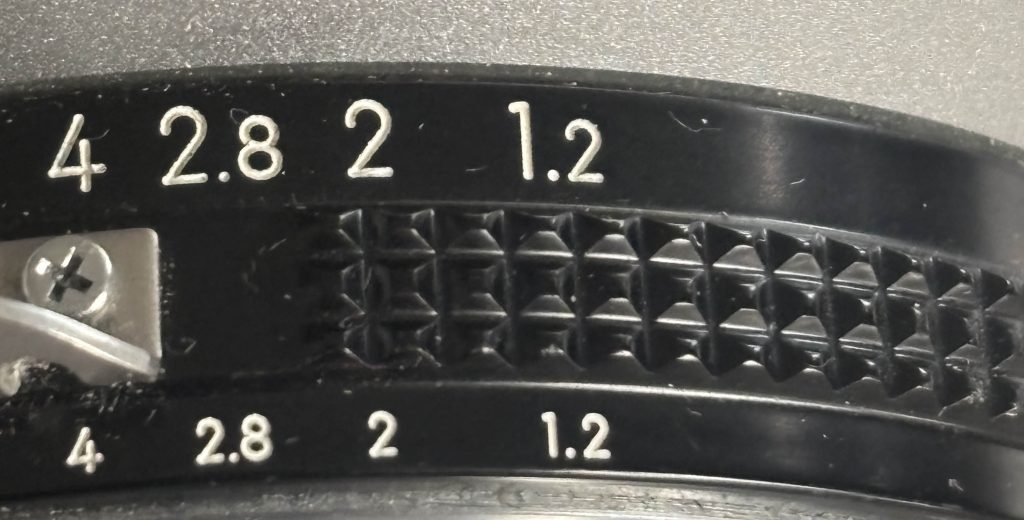
Bokeh and rendering
This is where the Noct shines emotionally: buttery, smooth out-of-focus transitions and pleasing highlight shapes from its blade geometry. Reviewers consistently praise its “non-busy” bokeh and subject separation that flatters skin and portraits. Expect rounded, painterly highlights without aggressive onion-ringing in most situations. If your aim is subject isolation and a classic portrait look, the Noct delivers.
Coma, point-light handling, and night use
The Noct was explicitly tuned to minimize sagittal coma flare, so point lights in the corners (street lights, stars) behave far better than most “normal” lenses wide open — fewer comet tails, more consistent discs. For night street photography and low-light environmental portraits, that unique coma control is a major reason to reach for the Noct.
Chromatic aberration & vignetting
- Axial/Lateral CA: Longitudinal chromatic aberration (color fringing in front/behind focus) is noticeable at very wide apertures; lateral CA in the outer frame is more pronounced on high-pixel sensors. Most reviews show CA becoming much more manageable by f/2.8–f/4.
- Vignetting: Expect noticeable fall-off at f/1.2 — often a stop or two in the corners at infinity focus. Closer focusing distances reduce apparent vignetting, and stopping down tames it.
Practical tip: shoot RAW and use targeted CA removal + profile vignette correction (or use it creatively — the vignetting can be flattering on portraits).
How it behaves on modern mirrorless / high-MP bodies
Adapted to AF bodies (via FTZ or other adapters) or used with adapters on Sony/Canon mirrorless, the Noct shows both its strengths and weaknesses more clearly:
- Strength: centre micro-rendering and bokeh are preserved; coma control remains a standout advantage for night work.
- Weakness: higher-resolution sensors reveal the midframe and corner weaknesses and CA more readily; some reviewers recommend stopping down more quickly than you might have with an older film era body.
Practical workflow: use magnified live view, focus peaking, and consider slight back-button magnify + shutter-half-press preview to ensure micro-focus accuracy.
Recommended uses
- Environmental and studio portraits where you can control focus and want creamy backgrounds.
- Street / night work with point lights — the Noct’s coma control makes it exceptional here.
- Creative wide-open photography where center pop and subject separation are priorities.
Avoid: landscapes or architectural work where corner resolution at wide apertures is critical.
How to get the best images from the Noct
- Use focus-magnification and focus peaking on mirrorless bodies.
- If subject distance > ~10–15 m (infinity/landscape), stop down to f/4–f/8 for better edge performance.
- For portraits where you want strong subject separation, f/1.2–f/1.8 is spectacular — just nail focus.
- Shoot RAW and apply modest CA correction and vignette control in post; preserve the bokeh and micro-contrast.
- When shooting night points, frame to use the Noct’s coma strength — corner lights will behave nicely compared to other “normal” lenses.
Quirks
- The lens rewards technique: minor focus errors are visible at f/1.2.
- It has a personality — micro-contrast and “pop” vs modern clinical contrast can vary depending on sensor and processing.
- Some testers report a focus shift or slightly different micro-behavior depending on camera (film vs high-MP digital), so check your pairing.
Who should buy this?
Buy it if you are looking for a unique portrait/night lens with classic rendering and you enjoy manual focus craftsmanship. Don’t buy it if you need modern AF convenience or clinical, pixel-peeping corner sharpness wide open for technical landscape or studio product work. It’s a specialty tool that rewards respect and technique.
Comparing to modern alternatives
Compared with newer 50–60mm fast lenses (and Nikon’s own modern Noct Z variants), the vintage Noct is less “even” across the frame but has a distinctive personality that many modern ultra-fast lenses try to mimic. If you want perfectly neutral, ultra-sharp wide-open modern optics, look to contemporary designs; if you want classic character, silky bokeh, and the legendary night performance, the vintage Noct is a soul-fulfiling choice.
Further reading
Highly recommended if you want to dive deeper: Photography Life (detailed optical measurements and field tests), Phillip Reeve (recent mirrorless/42–61MP body tests), Moment (coma and night testing), Ming Thein (practical imaging notes), The Cine Lens and Steve Huff (character and sample galleries).